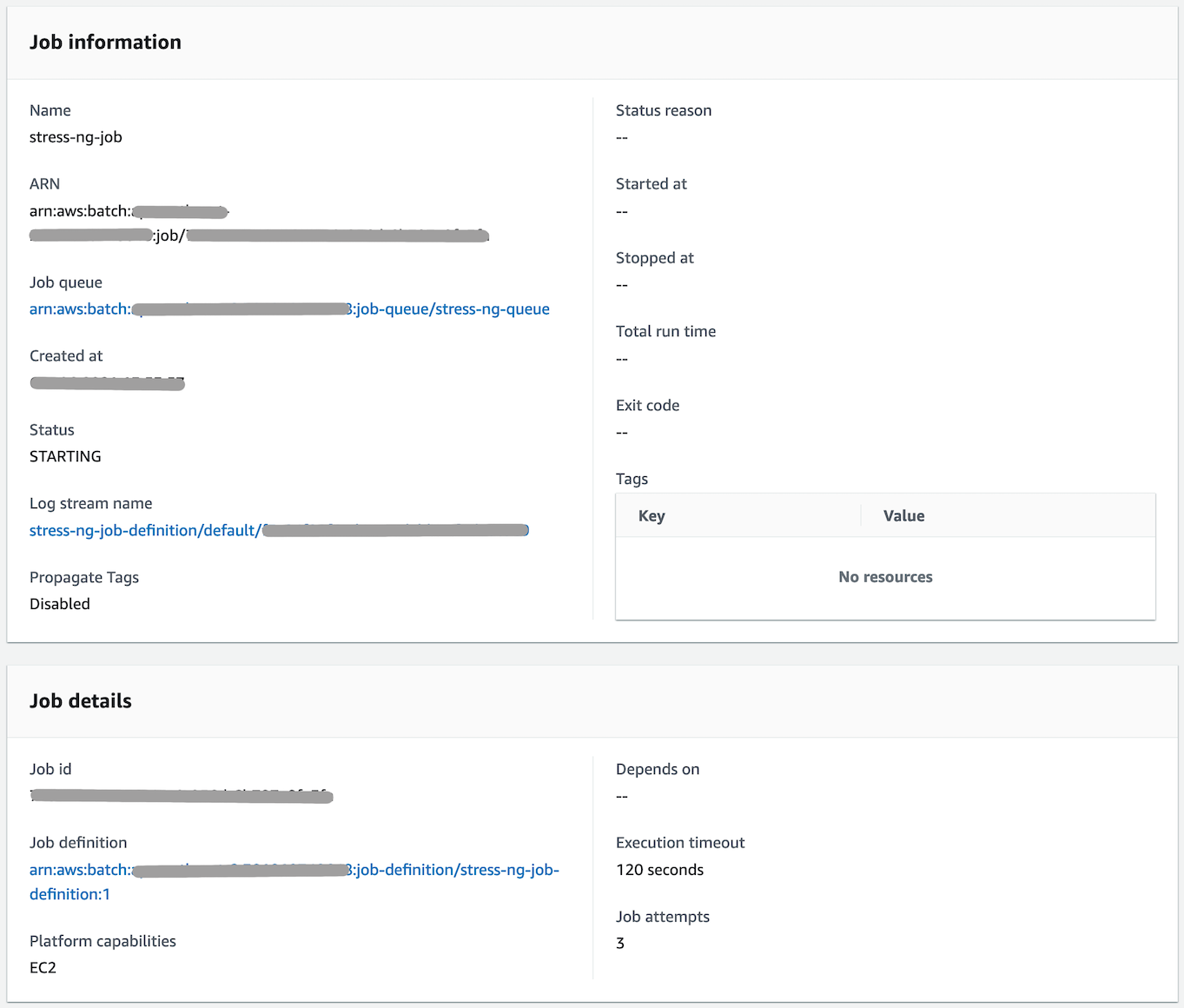RemoteIoT Batch Job Example: Your Gateway To Efficient Remote Work Since Yesterday
Hey there, tech enthusiasts! Are you ready to dive into the world of remote IoT batch jobs? If you've been exploring ways to enhance your remote work capabilities, this is the perfect place for you. RemoteIoT batch job examples are more than just buzzwords; they’re the future of streamlined operations in a world where remote work has become the norm since yesterday.
In today's fast-paced digital era, companies are seeking innovative ways to automate and optimize their processes. RemoteIoT batch jobs are a game-changer, allowing businesses to execute repetitive tasks efficiently without manual intervention. Whether you're a developer, IT professional, or simply someone curious about how IoT integrates with remote work, this article has got you covered.
But why stop at just knowing what remote IoT batch jobs are? We’re here to break it down step by step, offering you practical examples, actionable insights, and tips to implement these solutions in your own workflow. So, buckle up and let’s explore the fascinating realm of remote IoT batch jobs together!
- Unleash Your Inner Style Goddess With Alternative Hairstyles For Women
- Haircuts For Thick Hair Over 50 Finding The Perfect Style To Match Your Personality
What Are RemoteIoT Batch Jobs?
Before we jump into the nitty-gritty, let’s first understand what remote IoT batch jobs are all about. In simple terms, a remote IoT batch job is a process where IoT devices perform predefined tasks in bulk without constant human supervision. These jobs are executed remotely, making them ideal for companies that have embraced remote work since yesterday.
Why RemoteIoT Batch Jobs Matter
Here’s why remote IoT batch jobs are becoming increasingly popular:
- **Automation**: Automating repetitive tasks saves time and reduces errors.
- **Scalability**: These jobs can handle large volumes of data efficiently.
- **Cost-Effectiveness**: Minimizing manual intervention lowers operational costs.
- **Flexibility**: With remote execution, you can manage tasks from anywhere in the world.
Think about it—whether you’re managing a fleet of smart devices or processing massive datasets, remote IoT batch jobs ensure that everything runs smoothly without requiring constant attention. It’s like having an invisible team of robots working tirelessly for you!
- Wash And Wear Hair Styles The Ultimate Guide To Effortless Beauty
- Funky Hairdos The Ultimate Guide To Unleashing Your Inner Rock Star
Getting Started with RemoteIoT Batch Jobs
Now that we’ve covered the basics, let’s talk about how to get started with remote IoT batch jobs. The process might seem overwhelming at first, but trust me, it’s easier than you think.
Key Components of a RemoteIoT Batch Job
To set up a successful remote IoT batch job, you need to consider the following components:
- **IoT Devices**: These are the workhorses of your operation. They collect data and execute commands as instructed.
- **Cloud Platform**: A reliable cloud platform is essential for managing and monitoring your batch jobs.
- **Programming Languages**: Familiarize yourself with languages like Python, JavaScript, or C++ to write scripts for your batch jobs.
- **APIs and SDKs**: Use APIs and SDKs provided by your IoT platform to simplify integration.
With these components in place, you’ll be well on your way to creating efficient remote IoT batch jobs that cater to your specific needs.
Real-World RemoteIoT Batch Job Example
Let’s look at a real-world example to better understand how remote IoT batch jobs work in practice. Imagine you’re running a smart agriculture project where sensors monitor soil moisture levels across multiple fields.
Here’s how a remote IoT batch job could help:
- Sensors collect data on soil moisture levels every hour.
- This data is sent to a cloud platform for analysis.
- A batch job runs daily to identify fields with low moisture levels.
- Based on the results, irrigation systems are automatically activated to water those fields.
Not only does this save time, but it also ensures that your crops receive the right amount of water, improving yield and reducing waste. Pretty cool, right?
Benefits of Implementing RemoteIoT Batch Jobs
Now that we’ve seen an example, let’s discuss the benefits of implementing remote IoT batch jobs in your organization:
1. Increased Efficiency
By automating repetitive tasks, you free up your team to focus on more critical activities. This leads to increased productivity and better resource allocation.
2. Enhanced Data Accuracy
Manual data processing is prone to errors, but remote IoT batch jobs eliminate this risk by ensuring consistent and accurate results.
3. Improved Decision-Making
With access to real-time data and automated insights, you can make informed decisions faster and more effectively.
4. Scalability
As your business grows, remote IoT batch jobs can easily scale to handle larger volumes of data and more complex tasks.
Challenges and Solutions in RemoteIoT Batch Jobs
While remote IoT batch jobs offer numerous advantages, they’re not without challenges. Here are some common obstacles and how to overcome them:
Challenge 1: Security Concerns
With remote execution, security is a top priority. To address this, ensure that your IoT devices and cloud platforms are protected with robust encryption and authentication protocols.
Challenge 2: Connectivity Issues
Unstable internet connections can disrupt batch job execution. To mitigate this, implement failover mechanisms and offline processing capabilities.
Challenge 3: Complexity of Setup
Setting up remote IoT batch jobs can be complex, especially for beginners. To simplify the process, consider using pre-built templates and tutorials provided by your IoT platform.
Best Practices for RemoteIoT Batch Jobs
To maximize the effectiveness of your remote IoT batch jobs, follow these best practices:
- **Plan Ahead**: Clearly define your objectives and the tasks you want to automate.
- **Test Thoroughly**: Before deploying your batch jobs, test them extensively to ensure they work as expected.
- **Monitor Performance**: Regularly monitor the performance of your batch jobs and make adjustments as needed.
- **Document Everything**: Keep detailed documentation of your setup and processes for future reference.
By adhering to these practices, you’ll be able to create reliable and efficient remote IoT batch jobs that deliver consistent results.
Tools and Platforms for RemoteIoT Batch Jobs
When it comes to implementing remote IoT batch jobs, having the right tools and platforms is crucial. Here are some popular options:
1. AWS IoT
AWS IoT offers a comprehensive suite of tools for managing IoT devices and executing batch jobs at scale. Its robust infrastructure ensures seamless operation even in large-scale deployments.
2. Microsoft Azure IoT
Microsoft Azure IoT provides a user-friendly interface and powerful features for building and managing remote IoT batch jobs. Its integration with other Microsoft services makes it a great choice for businesses already using the Microsoft ecosystem.
3. Google Cloud IoT
Google Cloud IoT leverages the power of Google’s cloud platform to offer scalable and secure solutions for remote IoT batch jobs. Its advanced analytics capabilities make it ideal for data-driven applications.
Tips for Optimizing RemoteIoT Batch Jobs
To take your remote IoT batch jobs to the next level, here are some optimization tips:
- **Batch Size Optimization**: Adjust the batch size based on your workload to achieve optimal performance.
- **Resource Allocation**: Ensure that your cloud platform has sufficient resources to handle the workload.
- **Error Handling**: Implement robust error-handling mechanisms to prevent job failures.
- **Regular Updates**: Keep your IoT devices and software up to date to benefit from the latest features and security patches.
By following these tips, you’ll be able to optimize your remote IoT batch jobs for maximum efficiency and reliability.
Future Trends in RemoteIoT Batch Jobs
As technology continues to evolve, so too will the capabilities of remote IoT batch jobs. Here are some trends to watch out for:
1. Edge Computing
Edge computing will play a significant role in reducing latency and improving the performance of remote IoT batch jobs by processing data closer to the source.
2. AI Integration
The integration of AI and machine learning will enhance the capabilities of remote IoT batch jobs, enabling them to learn from data and improve over time.
3. Increased Security Measures
With the growing importance of data privacy, we can expect to see more advanced security measures being implemented in remote IoT batch jobs.
Conclusion
And there you have it—a comprehensive guide to remote IoT batch jobs. From understanding the basics to exploring real-world examples and future trends, we’ve covered everything you need to know to get started. Remote IoT batch jobs are a powerful tool that can transform the way you work, especially in a world where remote work has become the norm since yesterday.
So, what are you waiting for? Start exploring the possibilities of remote IoT batch jobs today and take your operations to the next level. Don’t forget to leave a comment below sharing your thoughts or experiences with remote IoT batch jobs. And if you found this article helpful, be sure to share it with your network!
Table of Contents
- What Are RemoteIoT Batch Jobs?
- Getting Started with RemoteIoT Batch Jobs
- Real-World RemoteIoT Batch Job Example
- Benefits of Implementing RemoteIoT Batch Jobs
- Challenges and Solutions in RemoteIoT Batch Jobs
- Best Practices for RemoteIoT Batch Jobs
- Tools and Platforms for RemoteIoT Batch Jobs
- Tips for Optimizing RemoteIoT Batch Jobs
- Future Trends in RemoteIoT Batch Jobs
- Conclusion
- Mid Length Haircuts For Older Women Stunning Styles That Embrace Your Inner Beauty
- Short Bob Hairstyles For Over 60s A Fresh Look That Keeps You Stylish And Confident

What Is RemoteIoT Batch Job Example Remote Remote And Why Should You Care?

Industries with the Most Remote Work Opportunities Remote

g. Run a Single Job AWS HPC